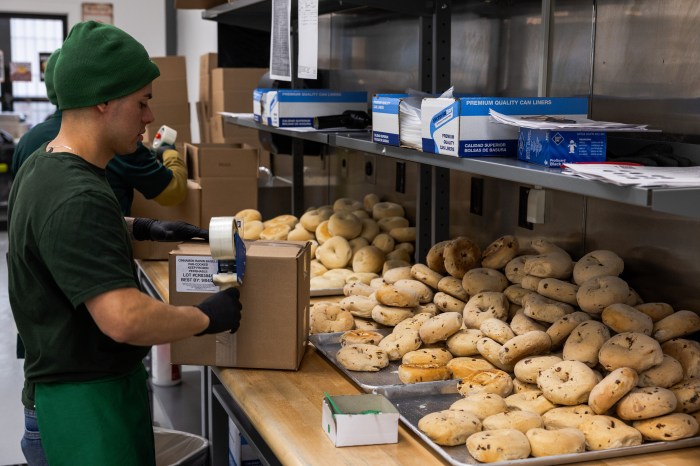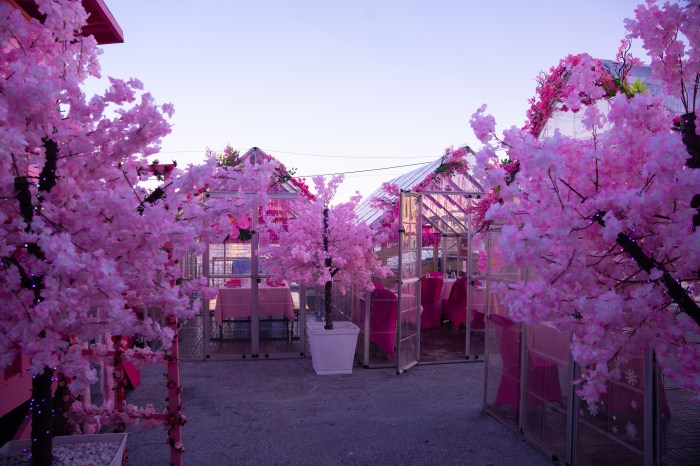
Assumptions about food and cuisine dictates what many people eat, as well as what they drink with it. Steak? Red wine. Chicken? White, of course. Cookies and milk. Chinese food and beer — but that one’s changing.
If you’re interested in wine and food circa right now you’ve likely heard of the new it drink, natural wine. The growing popularity of these wines, which at their most basic definition are wines produced without additives like sugars or non-naturally occurring yeasts, has resulted not only in increased interest in wine drinking, but also in wine pairing.
Natural wine has taken center stage at upscale spots such as the nouveau-bistro Frenchette and at small plate and wine bars in Brooklyn like June and The Four Horsemen, among others. But it’s also appearing in less obvious places like Pinch Chinese, which opened last year in SoHo. This restaurant features a list heavy on natural wines, with an emphasis on wine pairings, that changes often. General manager and wine director Miguel de Leon often goes off menu with his picks.
We spoke with de Leon, 34.

What was your approach to crafting a wine list for Pinch?
My approach is not dogmatically natural. I can’t just have a geek wine list, but I try to feature organic, biodynamic and small-scale producers. Natural wine is so much more flavorful and food-friendly because of minimal intervention.
Why does Chinese food in particular pair well with natural wine?
Chinese food has inherent balance: sweetness, sourness, bitterness, saltiness. It also pays a lot of attention to subtlety and texture. You can even say that Chinese cuisine is one of the original farm-to-table cuisines: In the last three or four thousand years there are recipes that are still the same and still cherished in the culture, without intervention. . . . The same could be said for some natural winemaking methods. . . . These textured wines are flavorful and just as balanced. Natural winemaking has championed the grape and the vineyard as it expresses itself into the bottle, the way of the grape in the universe — the overarching philosophy with the Tao.
People often associate drinking beer with Chinese food. Why do you want that to change?
I only want it to change so that people can see what they’re missing! Beer is great for salty and spicy food, but not all Chinese food is salty or spicy. . . . When you break it down regionally there are even more nuances and subtleties that you can uncover with a good pairing.
How have guests responded to the wine list and the pairings?
A lot of people’s first times at Pinch include them not realizing that we have a very accessible wine-by-the-bottle list. They might be coming in thinking they’ll have a beer but are always intrigued why we have wineglasses out on tables. The moment they open themselves to that experience the journey can be amazing.
What do you hope people take away from their meal at Pinch?
I hope people don’t limit themselves to an experience they think they should have but one that they don’t know they’ll get from another Chinese restaurant. If you come away from the magic of a wine and food interaction that you’ve never had before, we’ve done our [job].
Recommended pairings at Pinch

Pork soup dumplings with Wild Arc Farm Piquette (Hudson Valley, New York)
This effervescent wine is made in the traditional piquette style, where the fruit is used twice with the second fermentation resulting in a lower alcohol level and highly drinkable wine. The carbonation makes for a nice textural play between the wine and the broth in the dumplings.

Cumin pork ribs with Gratavinum 2 Pi r (Priorat, Spain)
This wine is made from a blend of organic carignan, grenache, cabernet sauvignon and syrah grapes. The soft and fruit-forward taste amplifies the smoky flavor of the ribs.

Mapo tofu with Stefan Vetter Müller-Thurgau (Franken, Germany)
This white is made with Müller-Thurgau grapes and has a mineral edge with notes of crisp honeysuckle. A harmonious balance is created when paired with the assertive and spicy flavors of mapo tofu.



































